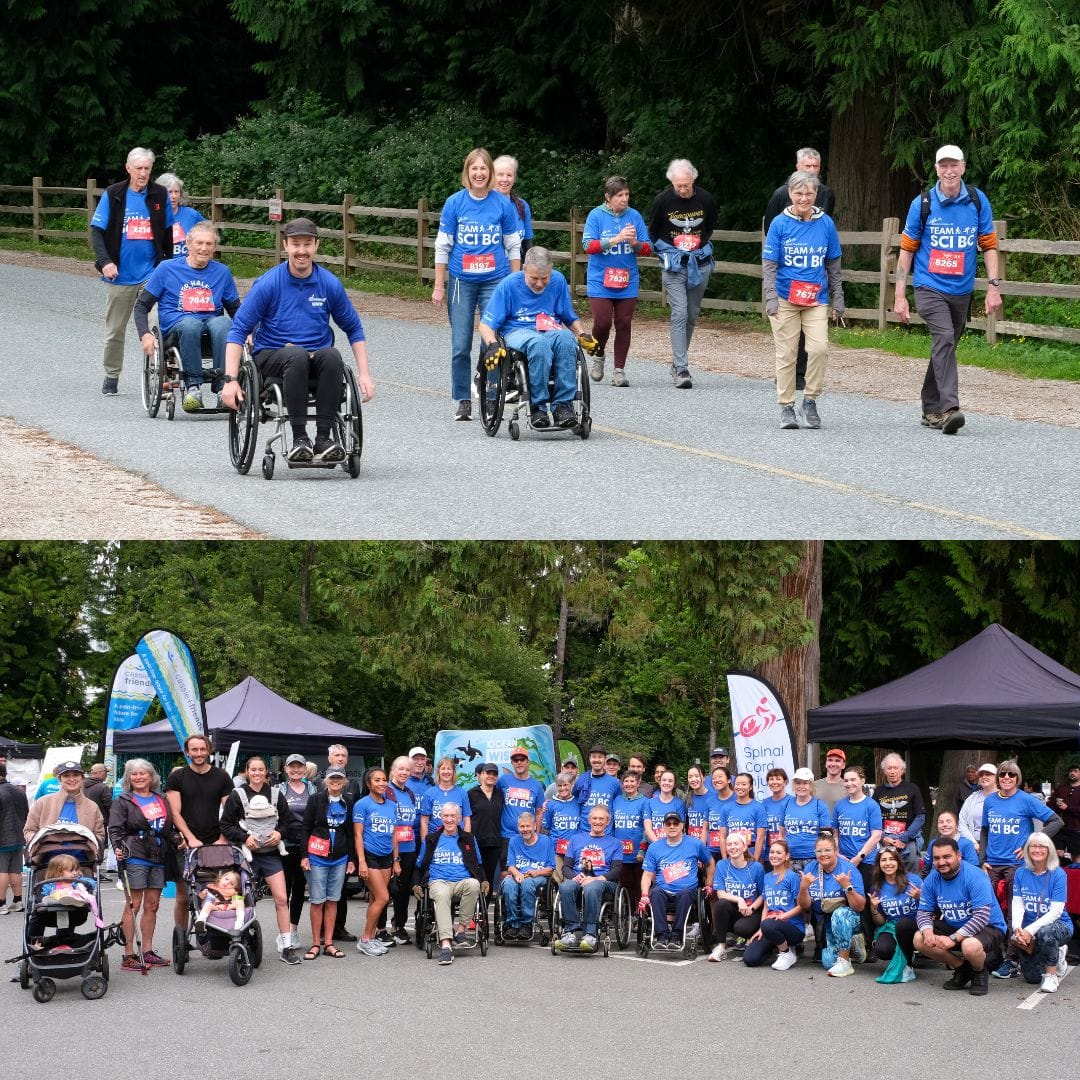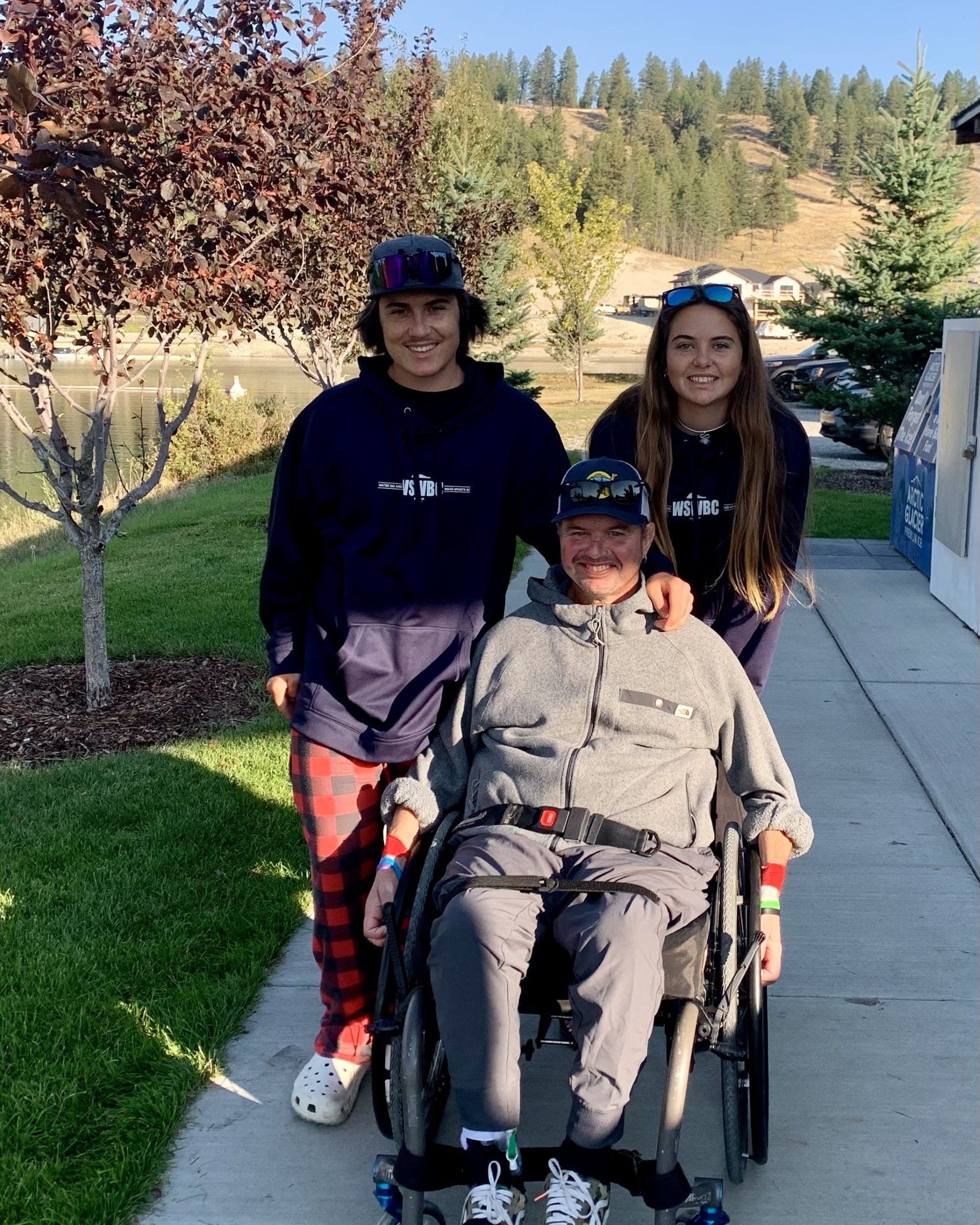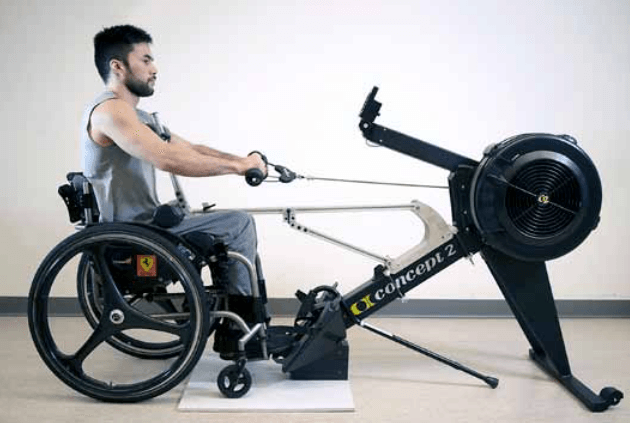
Trevor Greene Wants To Row Again
Trevor Greene really wanted to row again. The 55-year-old Nanaimo resident was once an elite-level rower. But in 2006, when the former Canadian Forces Army Reserve captain was struck in the head with an axe while serving in Afghanistan, his competitive rowing came to an abrupt end.
Greene suffered a catastrophic brain injury in the attack and was left substantially paralyzed. Initially, he and his family were told not to expect much in the way of meaningful regaining of function. His well-chronicled recovery, however, has been nothing short of amazing. While he’s still unable to walk, his progress has become textbook material for the brain’s neuroplastic ability to rewire itself.
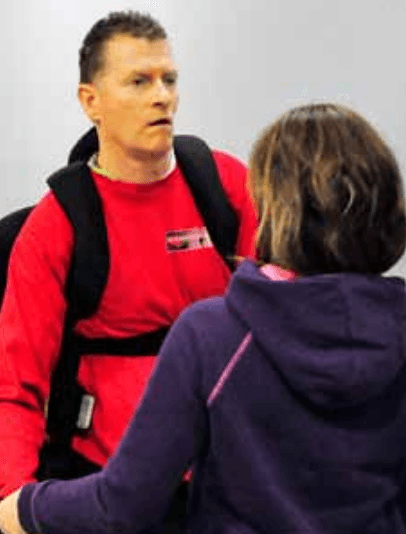
A Solution?
In 2017, he met Dr. Carolyn Sparrey, a mechanical engineer who is a Principal Investigator at ICORD and an Assistant Professor in the School of Engineering Science at Simon Fraser University. Greene told Sparrey about his desire to exercise with stationary rowing—and his frustrating search for a rowing ergometer that could accommodate his functional challenges while giving him a decent workout.
Sparrey met the challenge and designed a preliminary custom solution for Greene. In the process, she connected with Martin George, a para-rowing coach with Rowing BC. She learned from George that, despite rowing being an excellent upper body workout and suitable in many ways for people with SCI, there were limited solutions for people with SCI and other disabilities to use indoor rowing as an alternate workout.
Sparrey was intrigued, and by this time, had found a willing collaborator in Dr. Jaimie Borisoff. As a fellow ICORD Principal Investigator, Canada Research Chair in Rehabilitation Engineering Design at the British Columbia Institute of Technology, and someone who lives with an SCI, Borisoff needed little convincing to join Sparrey and further develop the concept of a rowing ergometer for people with disabilities. He’d had successes with similar projects over the years, including the development and commercialization of the Elevation wheelchair.

“After working with Trevor on his custom rowing solution, a study was published by Dr. Kathleen Martin Ginis and several ICORD researchers that highlighted the importance of physical exercise for overall health for people with SCI, and the team thought that a diversity of exercise options is important for keeping people engaged in exercise long term,” says Sparrey. “The rowing motion engages different muscle groups, allowing for rigorous exercise without exhausting already overused wheeling muscles. It also provides the opportunity to engage trunk muscles at whatever level the user has available while providing stability and support as needed.”
Borisoff and Sparrey recognized that they didn’t need to reinvent the wheel— they just needed to make it usable by someone with an SCI. In other words, their approach was to retrofit a commercially-available rowing ergometer, rather than build an SCI-friendly ergometer from scratch.
The “Arm”
“We call it the ARM, which is short for Adapted Rowing Machine,” says Borisoff. “The device consists of a support arm that connects to the front end of an existing rowing ergometer. The arm provides adjustable chest and lap support to accommodate users with a range of injury levels.”
The sliding seat component of the rowing ergometer is also removed, allowing users with disabilities to simply wheel up, set their locks, and get down to the business of grinding out a workout—all without having to transfer.
Borisoff explains that adding the ARM to existing machines would likely make it that much easier to get it out there for people to use, much more quickly.
“We wanted to make it available with a limited financial commitment, to encourage gyms and other facilities to be able to provide an alternative accessible exercise option,” he says. “Many gyms already have commercial rowing ergs, making the additional costs minimal.”
Make no mistake—this isn’t a device exclusively for use by paraplegics.
“The chest pad is there to provide support for users who have limited or no trunk strength,” says Borisoff. “This allows for an arms-only exercise, while also allowing someone with higher function to engage different levels of trunk musculature by simply adjusting the chest pad attachment. People with good hand function should be able to use the ARM on their own; users with limited hand function may need some help getting setup. It can be used with a variety of off-the-shelf accessories like Active Hands gloves.”
The immediate goal is to test the ARM in a variety of situations with a variety of users and confirm its design and benefits. Sparrey has been leading a research study of the device at PARC (Physical Activity Research Centre) at the Blusson Spinal Cord Centre in Vancouver for the past six months (recruiting for the study has been advertised here in The Spin for the past couple of issues).

“The concept device has been designed, assessed by focus group participants and now fabricated as prototype devices,” says Sparrey. “Research is ongoing regarding the ergonomic and physiological benefits of ergometer rowing for people with SCI compared with traditional handcycle exercises. We’re looking to expand the research by deploying additional systems to community recreation centres across the Lower Mainland and beyond.”
The design and benefits have yet to be confirmed by the research, but Borisoff and Sparrey say that preliminary results have been successful. For that reason, they’re already looking down the road at ways of getting the technology out there to as many people as possible.
“Plans are being made available open-source, so that anyone can have the device made by a local machine shop or Tetra volunteer or a high school tech class,” says Borisoff. “We have also created a handyman wooden version of the ARM that can be made by someone with access to basic woodworking tools. For those who have space for the equipment, it can be used in their own home, but the design has also been made robust enough for repeated use in public gym facilities.”
“The intention,” adds Sparrey, “is that these systems can be deployed in any gym facility, not only in a specialized setting like PARC. A key part of this research is to be able to embed accessible exercise options where people are, with the goal of making exercise convenient and more feasible.”
What Do Users Say?
- “I was able to get my heart rate up to a level that I have not been able to achieve in 10 years. I was very impressed with the work that you could actually do. And it was very easy to use.“
- “It is similar to a ski erg in that you’re pulling backwards. With wheeling, you’re always moving forward; you tend to be always curved forward, just even sitting in a day chair. Getting that backwards movement is huge, and just even the full body movement too.”
- “I think it was just the uniqueness of it. I mean, it’s just a rowing machine. But there is no adaptive rower machines out there right now.”
- “It was a nice smooth operation. It was easy to get in. There were no barriers. With a lot of adaptive equipment, you have to transfer out of your wheelchair…But this was (easy), you just roll in, drop the bar down and away you go.”
- “I loved it actually. To be honest, I would have taken it home with me if I could.”
Borisoff, Sparrey and other members of their team have created an online resource library (adaptederg.commons.bcit.ca) where you can find design plans, demonstration videos, instructions, and links to other resources for adapted rowing—for example, harnesses, binders, gloves, handles and grips.
If you’ve read this and want to get involved with the ARM research project, please contact Johanne Mattie by email at Johanne_Mattie@bcit.ca.
The work was funded by the Craig H. Neilsen Foundation (based in the USA) and an ICORD SEED grant.
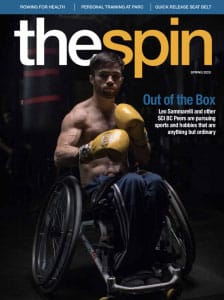
This article originally appeared in the Spring 2020 issue of The Spin. Read more stories from this issue, including:
- Anything But Ordinary
- Beyond The Hype
- Major Milestone
And more!
Read the full Spring 2020 Issue of The Spin online!
